An unexpected result of the abnormally warm December we’re now experiencing in the Texas Hill Country is the way our Tractor Seat plants (Ligularia dentata reniformis) are flourishing and blooming.
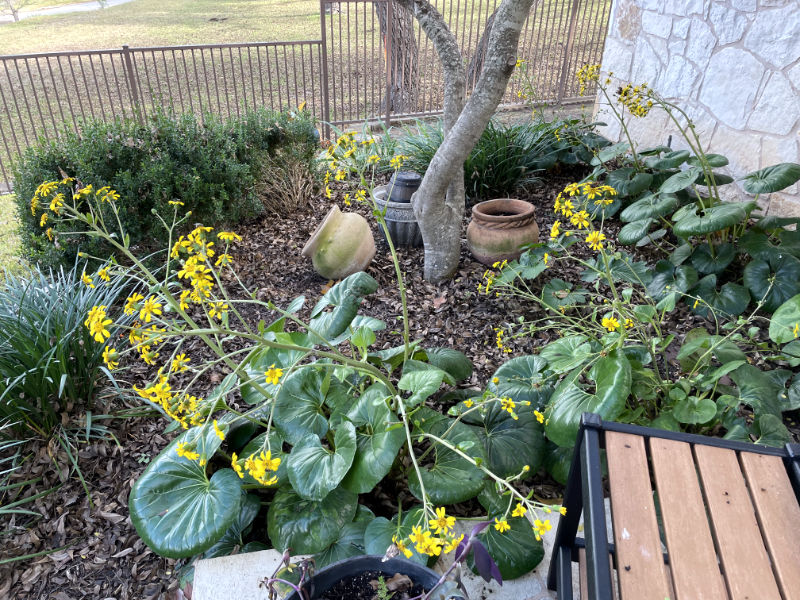
Despite the relative warmth, there are very few blooming plants — mums and pansies are about it — and none of them have yellow blooms. (OK…we have spotted a couple of squash blossoms, but they’re pretty rare.) That color seems to be an attraction for various pollinators, and that’s why we were surprised to see almost every flower hosting a fly, bee, or butterfly (and even the occasional moth).
Following are a few photos of the insect equivalent of a Golden Corral.
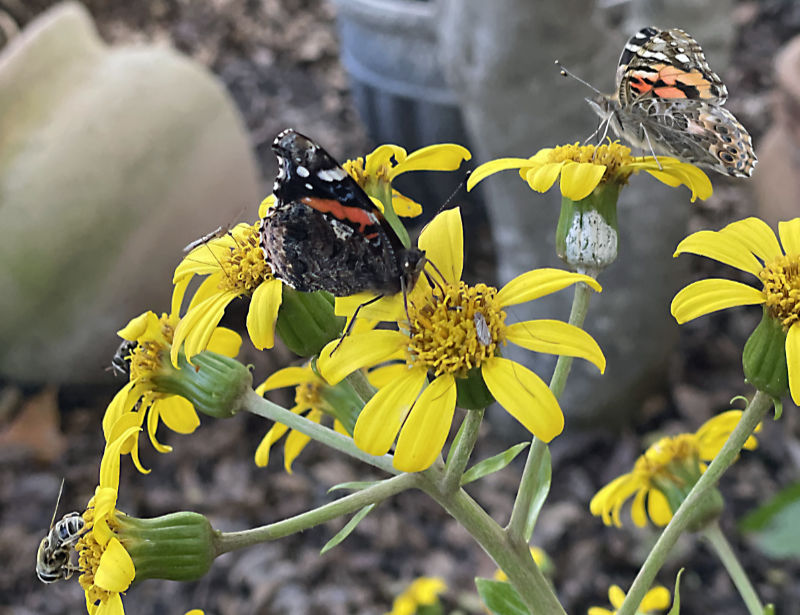
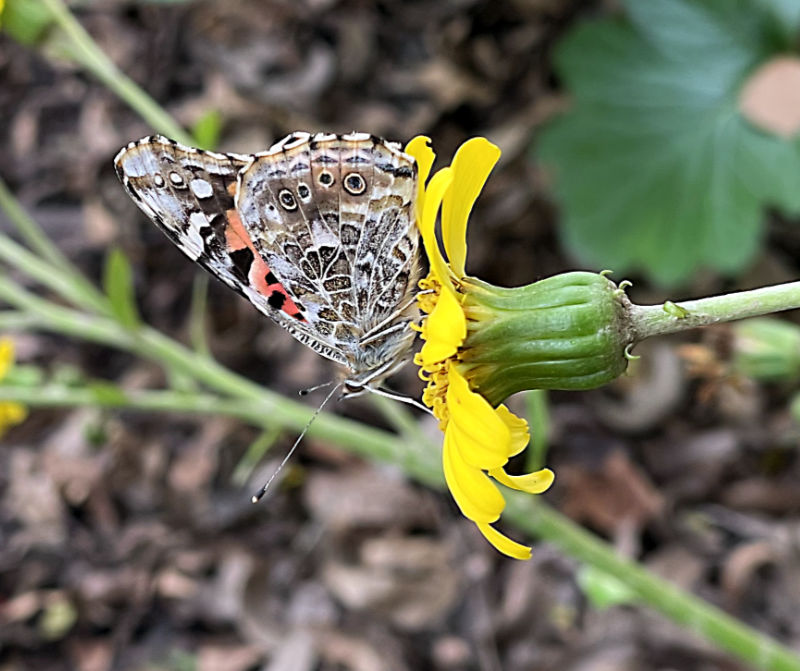
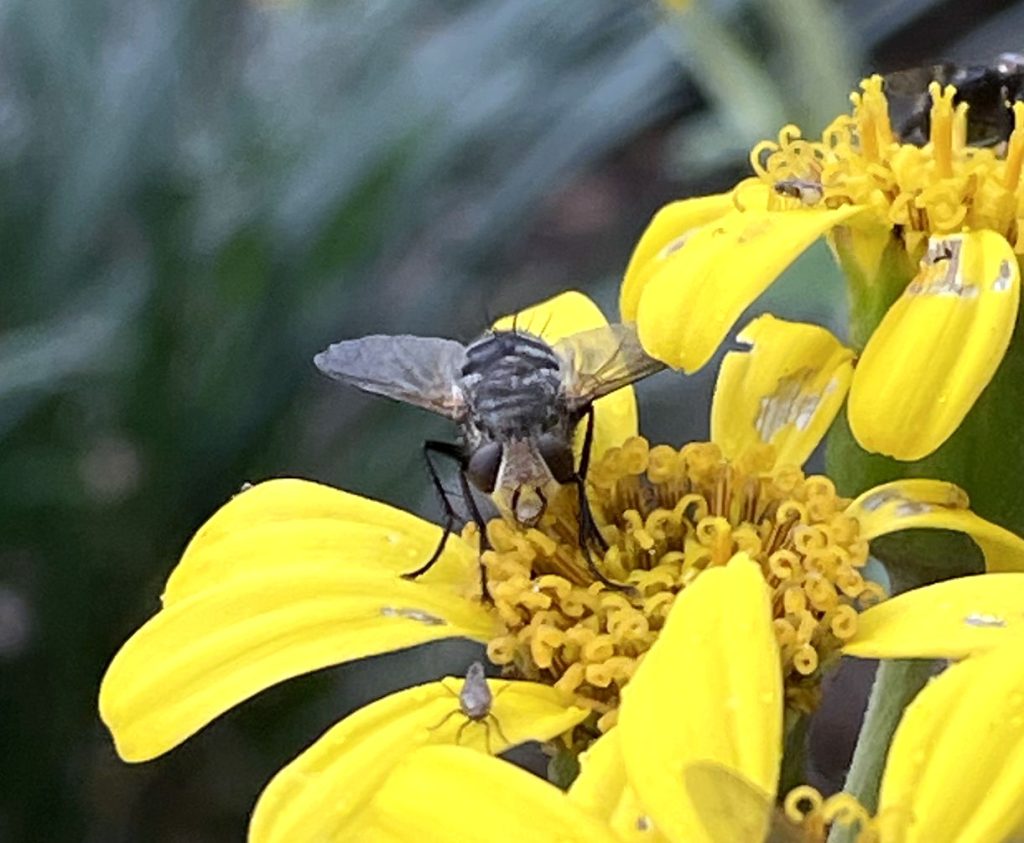
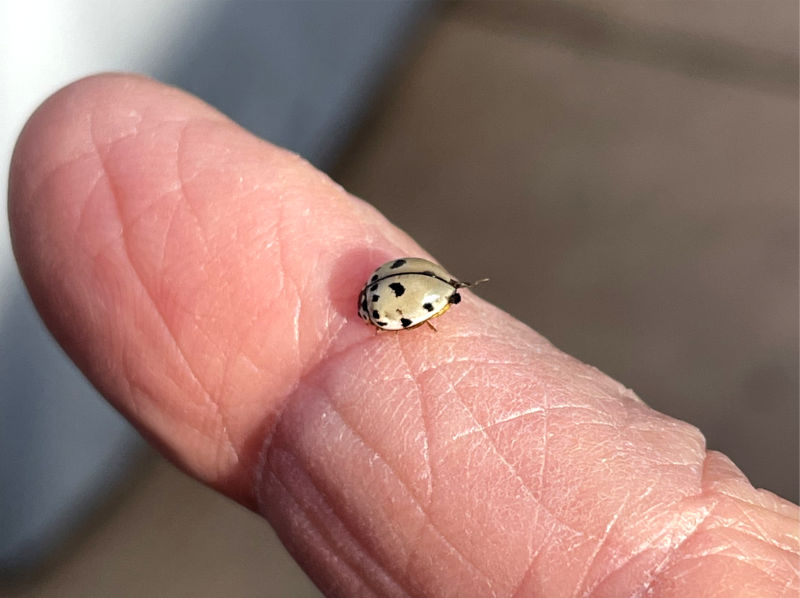
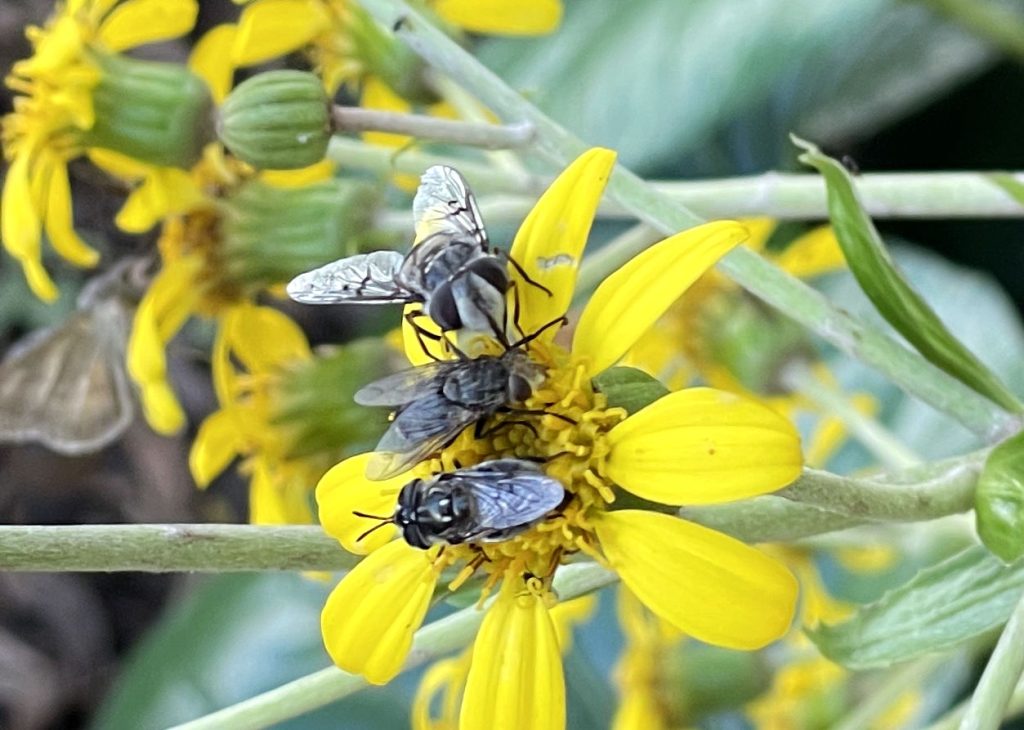
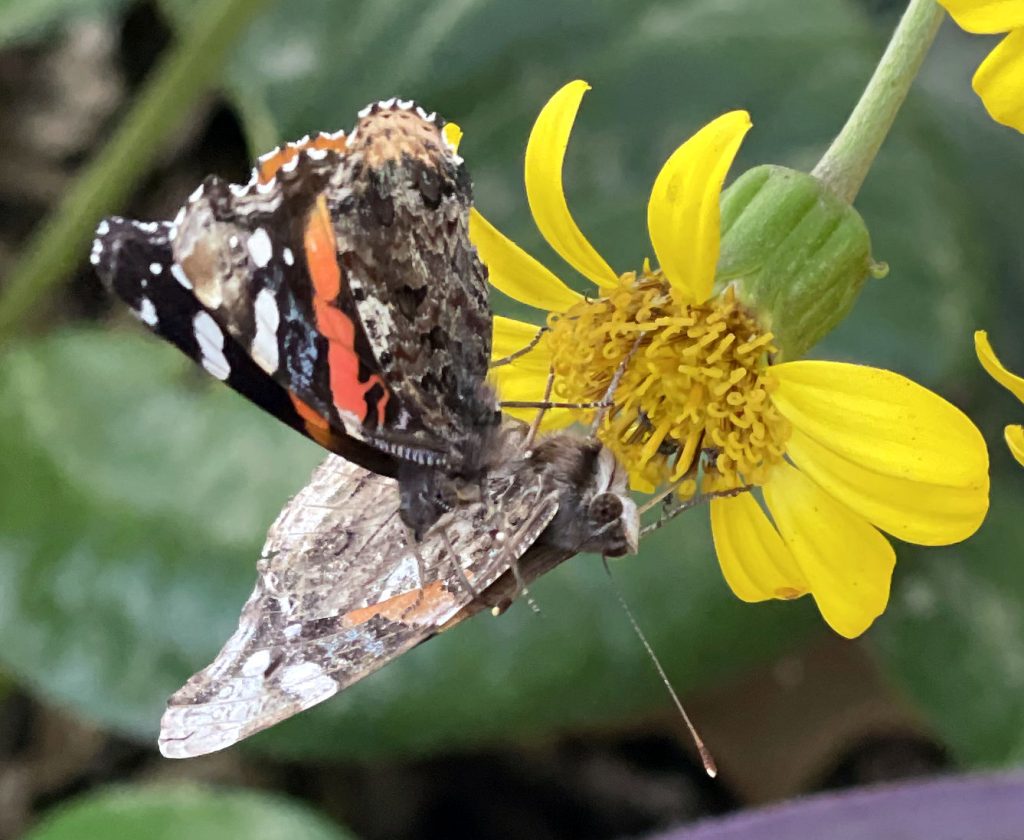
By the way, if you’re looking for an addition to your flowerbed that is tolerant of a pretty wide variety of conditions, you might check into these tractor seat plants. We have very few places that get filtered sunlight, but also not many options for plants that like it and can also tolerate triple digit heat. These guys do, as long as you keep them sufficiently watered. Also, ours didn’t really get into high gear, bloom-wise, until late fall.
If I get an ID from the aforementioned Facebook group experts, I’ll update this post, because I know you’re anxious to add to your knowledge of Texas insects. We’re all about education here at the Gazette (even if we have to make it up as we go along).
Update (12/24/23): The butterfly on the left in the photo is a red admiral (Vanessa atalanta), while the one on the right is a painted lady (Vanessa cardui). Both have a range that encompasses almost the entire world, and the latter species is said to be the most common butterfly in the world. The North American population does like to overwinter in warmer climates like Texas, and so they migrate southward. They’ll feed on a wide variety of plants, although the preferred food source for the red admiral is anything in the nettles family (Urticaceae), and for the painted lady it’s the family (Asteraceae) that includes daisies and asters.
The other critter is a fly, not a bee, and it’s been identified as a member of the Syrphidae family, aka drone flies or hover flies. There are about 6,000 species in this family, and they are pollen eaters, as well as playing an important in plant pollination.
Discover more from The Fire Ant Gazette
Subscribe to get the latest posts sent to your email.

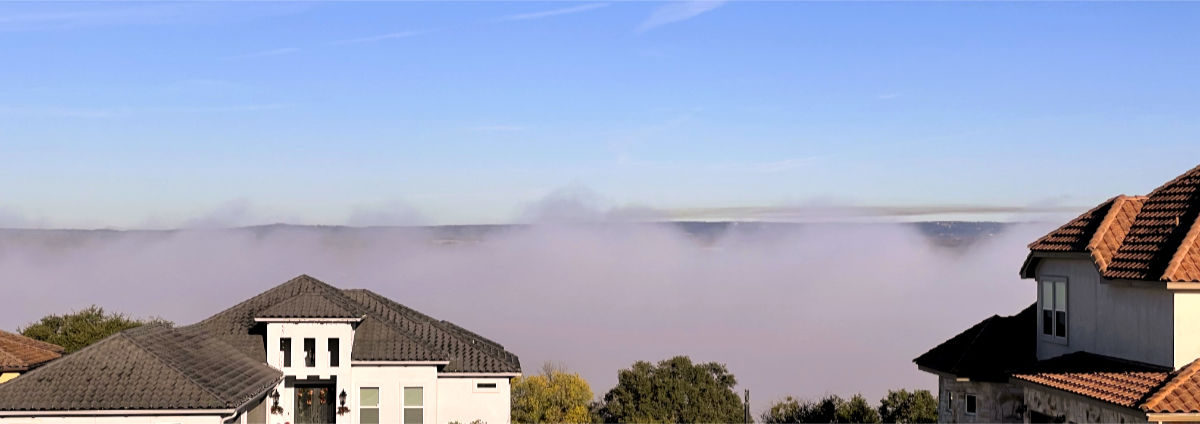
Enjoy pictures, information, and comments. Hope you and Debbie have a merry Christmas!!!
Thanks, Don…it’s great to hear from you! Say hi to Belinda, and you guys also have a great Christmas and a healthy and prosperous New Year!